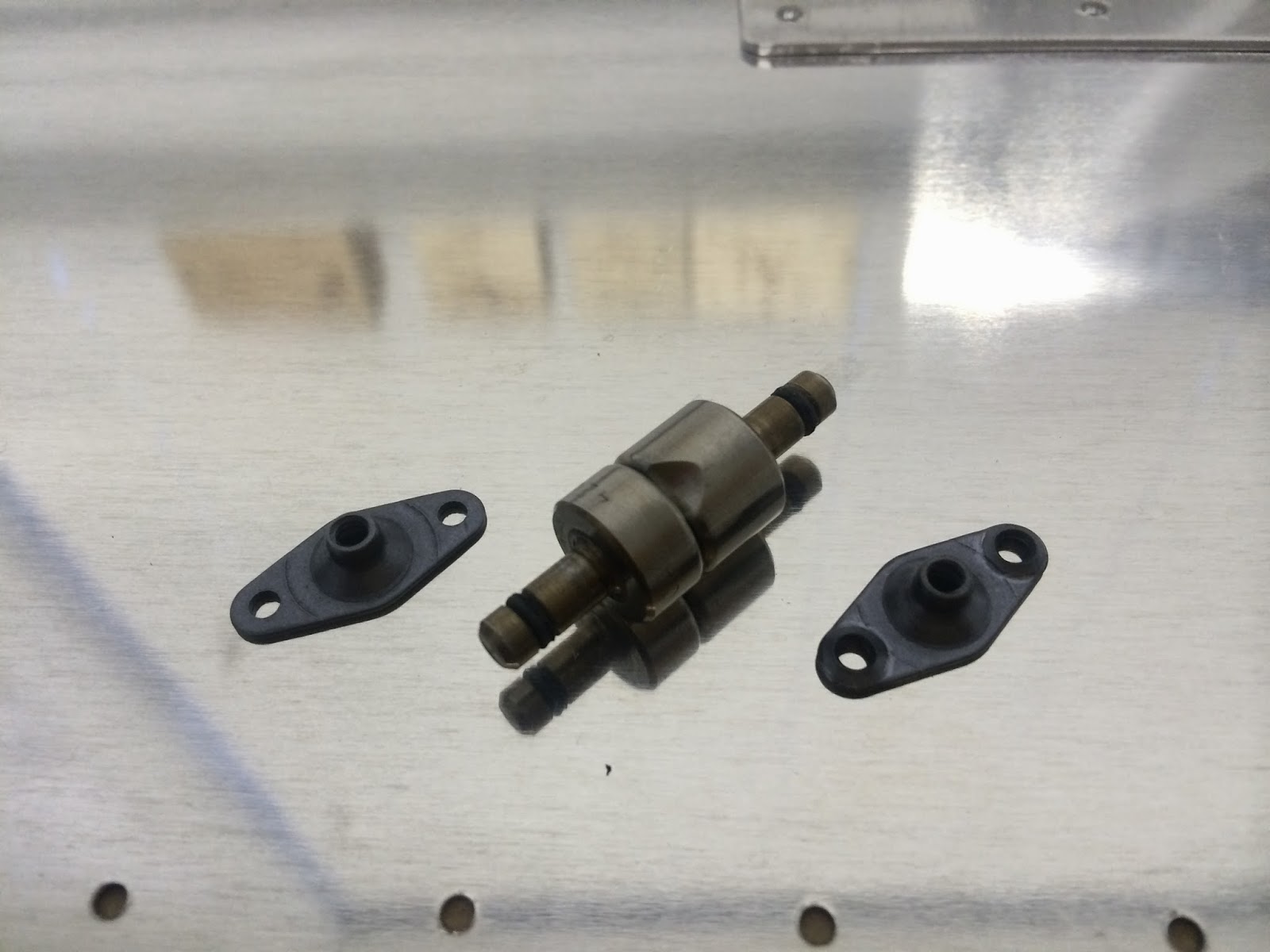Elevators - 14 mins (Elev. 15:55, Empennage 120:20, Total 134:16)
Rivet count: 0 (Total 2,154)I'm exhausted. So much so, that this is it for me tonight.... I can't believe I'm spending almost as much time writing this post as I spent working on the project tonight. So all I did tonight was dimple 14 nutplates, but I learned a bit in the process. Here's the pic, then I'll explain myself for those who are bored and looking for something to read.
I had previously ground the edge off the female #40 die as you can see in the pic. As explained by Chapter 5 of the Van's handbook, this allows the nutplate clearance to get the edges dimpled without being crushed. The "After" example is on the right in case it wasn't clear. I removed the spring from the dimpler to allow the two die halves to rest against the nutplate for better control. What I learned was about efficiency vs. quality. Specifically dealing with the hammer used on the dimpler. I started off using the rubber mallet. That seems to work really well for the aluminum pieces that bend so easily. The mallet is forgiving and quieter. However, for the harder steel such as that on the these nutplates, the mallet was just bouncing off the dimpler. It was taking 3 or 4 strikes to get the steel to even start bending, and even then it wasn't fitting evenly between the two dies after (only half dimpled essentially). Additionally, the dimpler was starting to damage the head of the mallet too. I switched to a regular steel hammer and it made quick work. Just one strike was good enough, though I gave it two just to be safe. The nutplate was flush with the dies, and the "fit test" on the elevator plate was perfect. Of course, just one drawback, the hammer requires more precise striking and also requires each "whack" to be pre-positioned making the work much slower. So it's a classic case of quality via slow work, or quantity via assembly line output. None of the above is anything groundbreaking, but it is still amazing to me to see just how much or how little attention to the details can be focused on such a large project as this. I'm sure this will be one of many learning points in the coming years, but for now, it's bedtime. We start deburring all 18 billion holes on the elevator tomorrow.... -M

No comments:
Post a Comment